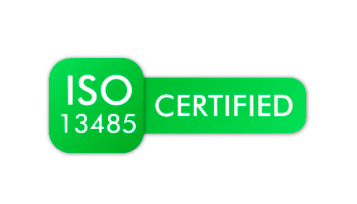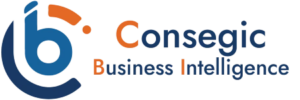Embarking on the journey to achieve ISO 13485 certification for your medical device manufacturing company is a strategic move that not only ensures compliance with international quality standards but also demonstrates a commitment to producing safe and effective medical devices. This comprehensive guide unveils insider tips to facilitate the seamless attainment of ISO 13485 certification.
Understanding ISO 13485: The Foundation of Medical Device Quality Management
ISO 13485 serves as the cornerstone for quality management in the medical device industry. Before diving into the certification process, it’s crucial to have a comprehensive understanding of the standard’s requirements. This involves grasping the principles of risk management, regulatory compliance, and the establishment of an effective quality management system (QMS) tailored to medical device manufacturing.
Conducting a Gap Analysis: Identifying Areas for Improvement
Initiate the ISO 13485 certification journey by conducting a thorough gap analysis. This process involves assessing your current quality management practices against the requirements of ISO 13485. Identify areas that require enhancement or alignment with the standard. This proactive approach sets the stage for targeted improvements, ensuring a smoother certification process.
Developing a Robust Quality Management System: The Heart of ISO 13485 Compliance
The development of a robust QMS is pivotal in achieving ISO 13485 certification. This involves clearly defining processes, roles, and responsibilities within the organization. Ensure that your QMS encompasses risk management, document control, and traceability, addressing the specific needs of medical device manufacturing. A well-designed QMS not only facilitates compliance but also enhances overall operational efficiency.
Training and Competence: Empowering Your Team for Success
Invest in training and competence development for your team members. Ensure that staff at all levels understand their roles in maintaining a compliant QMS. This includes providing specialized training for those involved in critical processes such as design, production, and quality control. A knowledgeable and competent team is essential for the effective implementation of ISO 13485 requirements.
Documenting Procedures and Processes: Transparent Compliance
Thorough documentation of procedures and processes is a fundamental aspect of ISO 13485 compliance. Create clear and concise documents outlining how each process within your QMS is executed. This documentation serves as a reference for employees and auditors alike, fostering transparency and ensuring that everyone is aligned with the standardized procedures.
ISO 13485 Internal Auditor Training: Building In-House Expertise
One crucial aspect often overlooked is the significance of ISO 13485 internal auditor training. Developing in-house expertise in auditing processes against ISO 13485 requirements is a strategic move. Internal auditors play a key role in continually assessing the effectiveness of your QMS and identifying areas for improvement. Investing in ISO 13485 internal auditor training empowers your team to conduct thorough and objective internal audits, enhancing the overall quality culture within the organization.
Implementing Risk Management: A Proactive Approach to Compliance
ISO 13485 places a strong emphasis on risk management, recognizing its critical role in ensuring the safety and effectiveness of medical devices. Implement a proactive risk management process that identifies, assesses, and mitigates risks throughout the product lifecycle. Effectively integrating risk management into your QMS not only aligns with ISO 13485 requirements but also strengthens your organization’s ability to navigate challenges in the dynamic medical device industry.
Supplier Management: Ensuring Quality Throughout the Supply Chain
A robust supplier management system is imperative for ISO 13485 compliance. Evaluate and select suppliers based on their ability to meet quality requirements. Establish clear communication channels and expectations, and regularly assess supplier performance. Ensuring the quality of components and materials sourced from suppliers is integral to producing safe and effective medical devices that meet ISO 13485 standards.
Conducting Management Reviews: Strategic Decision-Making for Continuous Improvement
Regular management reviews are a key component of ISO 13485 compliance. These reviews provide leadership with insights into the performance of the QMS and its effectiveness in achieving quality objectives. Utilize management reviews to make informed decisions, allocate resources strategically, and identify opportunities for continuous improvement. A proactive approach to management reviews contributes to the agility and resilience of your medical device manufacturing processes.
Preparation for Certification Audit: Ensuring a Seamless Assessment Process
As you approach the certification audit, meticulous preparation is paramount. Conduct internal audits to simulate the conditions of a certification audit and address any identified non-conformities. Ensure that all documentation is complete, accurate, and readily accessible. By thoroughly preparing your team and processes, you set the stage for a smooth and successful certification audit, minimizing disruptions to your daily operations.
Continuous Improvement: Beyond Certification
ISO 13485 certification is not a one-time achievement; it’s a commitment to continuous improvement. Establish a culture of ongoing enhancement by regularly monitoring and measuring key performance indicators, soliciting feedback from stakeholders, and conducting internal audits. A dynamic QMS that evolves with industry changes and organizational growth ensures sustained ISO 13485 compliance and positions your medical device manufacturing company as a leader in quality and safety.
Post-Certification Strategies: Sustaining Excellence in Medical Device Manufacturing
Once ISO 13485 certification is achieved, the journey towards excellence doesn’t end—it evolves. Implement post-certification strategies to sustain and enhance your commitment to quality. Regularly revisit and update your QMS to accommodate changes in regulations, technology, and industry best practices. Engage in continuous training programs for employees to stay abreast of advancements in medical device manufacturing. Additionally, foster a culture of vigilance by encouraging reporting and investigation of non-conformities, ensuring that the lessons learned contribute to ongoing improvements.
Navigating Challenges: Adapting to Industry Dynamics and Regulatory Changes
The medical device manufacturing landscape is dynamic, with evolving technologies, changing market demands, and frequent regulatory updates. Successfully navigating these challenges requires a proactive approach. Establish mechanisms for monitoring regulatory changes, and adapt your QMS accordingly. Stay informed about emerging technologies that could impact your products, and be prepared to integrate them into your manufacturing processes. By remaining agile and responsive to industry dynamics, you position your company not just as a compliant entity but as an innovative force within the competitive medical device market.
Conclusion: Excelling in Medical Device Manufacturing with ISO 13485
In conclusion, achieving ISO 13485 certification for your medical device manufacturing company is a strategic move that elevates the quality and safety of your products. By understanding the intricacies of ISO 13485, developing a robust QMS, and investing in internal auditor training, you lay the foundation for compliance and continuous improvement. Embrace ISO 13485 as a framework for excellence, and let it propel your organization to new heights in the dynamic and critical field of medical device manufacturing.














